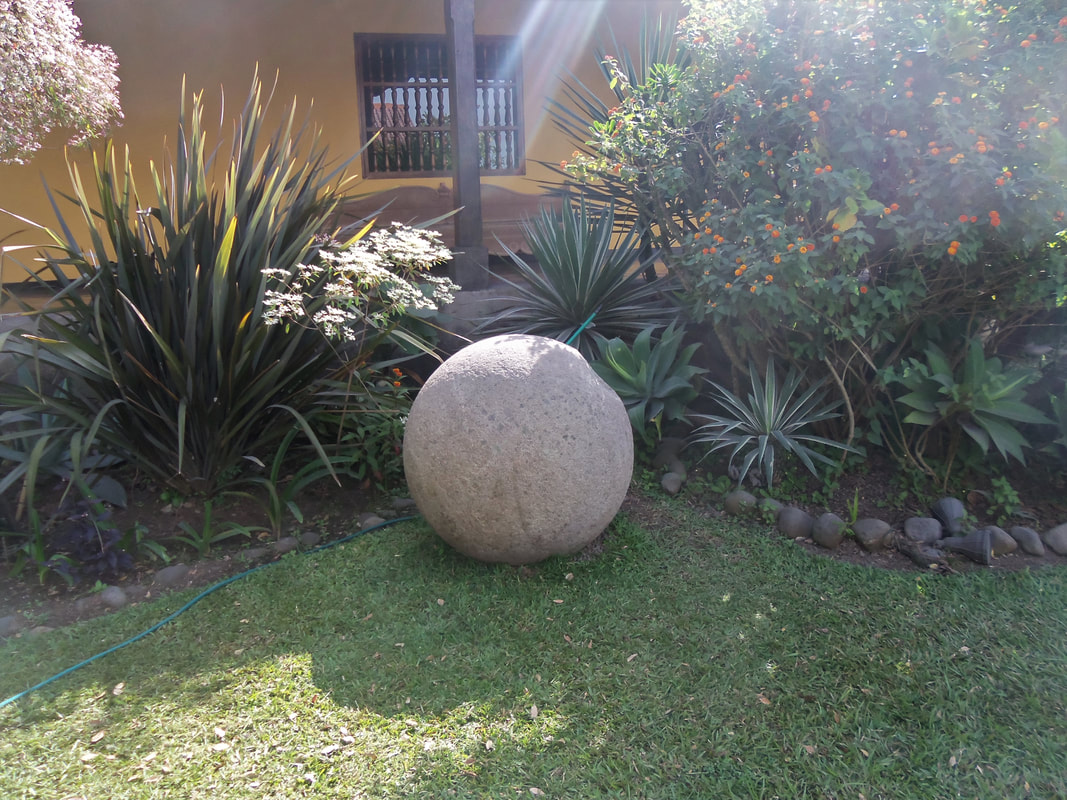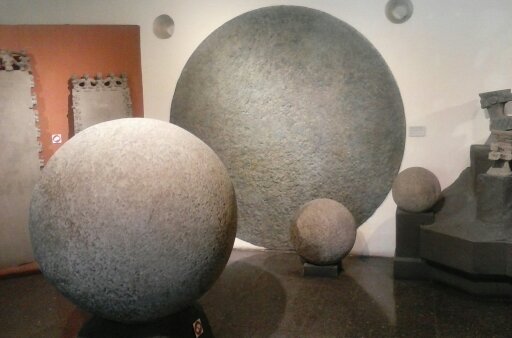|
A close look into The Stone Spheres of Costa Rica and the much debated nature of the origins to these mysterious artifacts . . .
This Website Contains Affiliate Links
While in Costa Rica, I could not help but investigate some of the stone spheres that this region is known for. There are hundreds of these mysterious objects scattered across the countryside, but the easiest way to observe these artifacts for yourself is to visit The National Museum of Costa Rica in downtown San Jose.
Debating Their Ancient Origin
Typically found around the remains of ancient settlements, stone spheres are a common find in Costa Rica. There is no written record detailing the creation or usage of these artifacts, but they are typically thought to have been the product of the native Diquis people. It is said that these objects were once collected and displayed as symbols of status by members of the ruling class.
Other Possible Explanations
The coastlines of New Zealand are a hot spot for this geological variation of stone spheres. The difference we see in these is the more natural and only partially rounded surface. This leads one to believe that these have been produced by the rolling currents of the ocean acting as a giant tumbler. There is also another natural variation of stone spheres in which sediment is compacted into a rounded shape. This phenomenon is known as concretion, and often includes multiple layers that can be chipped away.
Central America and New Zealand are not the only places where spherical artifacts have been discovered. Carved stone balls are common throughout Scotland as well, though much smaller and displaying decorative shapes and designs. Unlike these Central American artifacts, the European variation of stone sphere technology is much older and leaves no doubt to their human origins. My underlying point in this comparison is that the stone spheres of Costa Rica are very much different from other similar artifacts found around the globe. This variety is typically composed of solid basalt-like material, and displays no decorative markings. This leaves a window of speculation open to various interpretations of these artifacts.
The definitive origin of these artifacts is highly debated. Some do not even consider them artifacts at all, rather products of more natural occurrences. In my honest opinion, these stones are far too round not to have had some human manipulation to their surface. It seems to me that partially round boulders were most likely hammered into this shape with the use of stone tools. Please feel free to comment and let me know your opinion on these objects of ancient mystery.
I always travel using
Expedia
3 Comments
james mcnevin
12/4/2024 03:57:16 pm
I found a baseboll size rock in the bed of a creek, now wondering what to do with it it is white with black spots in it.
Reply
Kimberly Pirtle
2/23/2025 01:07:35 am
Hi. While checking out this article I started really looking at the images of stones, even going as far as blwong up the pictures on a normal computer. It seems at different angles of said rocks weathered images of letters, shapes and ect... seem to be presant.
Reply
Leave a Reply. |
Copyright ©2020 - 2025 The World by Siege, All Rights Reserved
Site powered by Weebly. Managed by Hostgator
This Website Contains Affiliate Links
Site powered by Weebly. Managed by Hostgator
This Website Contains Affiliate Links







